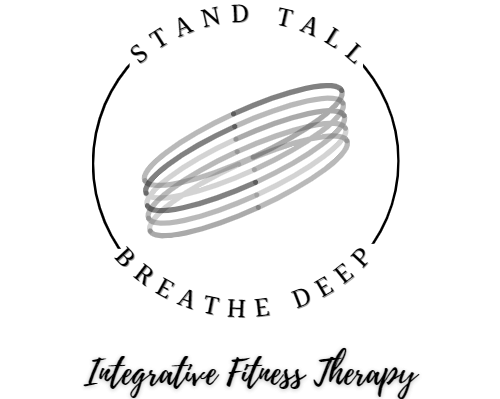…or tech life, or work life, or just life!
In life, movements can get complacent. Habitual movement patterns become ingrained and joints get stressed in the same area in the same way, day in, day out. Unless you’re ambidextrous, your dominant side takes a lot of mechanical stress. This could lead to early wear and tear and chronic pain and/or tension.

Restorative stretching is what I call active range of motion through a joints full range in a rhythmic manner. It’s essential to exercise a joint through its full range of motion and have adequate strength at all angles. Movement feeds the joint the nutrition it needs by increasing local circulation and synovial fluid. Synovial fluid lubricates the cartilage of the joint which results in a healthy glide. Kudos to the guy in the photo! But we don’t all have to move like ballet dancers, any movement will do. Movement is nutritive!
I’m right arm dominant, naturally lots of mechanical stress accumulates there. Most of it around my shoulder, down the arm and through my neck. In recent weeks it’s been exacerbated due to my hefty little infant. I carry her on my right arm and support her neck with my left. This week I’ve started changing that habit and switched to carrying her with my left arm. I’ve also incorporated active range of motion exercises for my chest, shoulders and arms. I’m happy to say it’s resulted in relief.
I’d like to share a few restorative stretches to address the specific stresses a modern busy life throws at us, this will cover the upper body. People with shoulder instability, past injuries or shoulder/neck issues should not attempt this without checking in with their doctor first. In the first video I’m mobilizing the cervical and thoracic spine. I’m using a myo-roller which I found on power-systems. Great product! Love the design, my spine fits neatly in the channel while I get a great myofascial release. Below I’ll describe the steps I’m going through.
This movement is great at opening up the – commonly found – tight chest area while it also mobilizes the upper back and neck. I’m placing my hands at the base of my skull to gently guide my head down towards the mat as I foam roll beginning at the base of my ribs to the upper back area.
With this movement I’m focusing on shoulder mobility (I’m using the resistance band as a tactile guide), taking care not to let the upper trapezius take over the movement. They are powerful and get chronically tight when the smaller helper muscles aren’t firing correctly. Notice how I keep my shoulders from hiking up to my ears. I do this by focusing on keeping my scapulae pressed against my ribs.
Here I’m working on stretching the chest area while exercising the small rotator cuff muscles. My focus is a restorative stretch – not strengthening – therefore, I keep the resistance mild. I want a smooth glide not a challenging pull. Notice my thumb in the starting and finishing positions. Think of the thumb as being the driver of the movement, moving down, point the the thumb down, moving up, point the thumb up. I begin with my arm in front of my navel and stop when my arm reaches the height of my forehead.
These movements have restored fluidity to my over-worked shoulders and chest area. They are therapeutic, I perform them everyday. I hope this has been informative and helpful, please share with someone you think might benefit. Don’t hesitate to contact me with your questions or to help program a personalized restorative stretch routine! As always…
Stand Tall, Breathe Deep!
-Corina Miranda-Risnes
NYS Licensed Massage Therapist
ACE Certified Trainer
NASM Corrective Exercise Specialist
